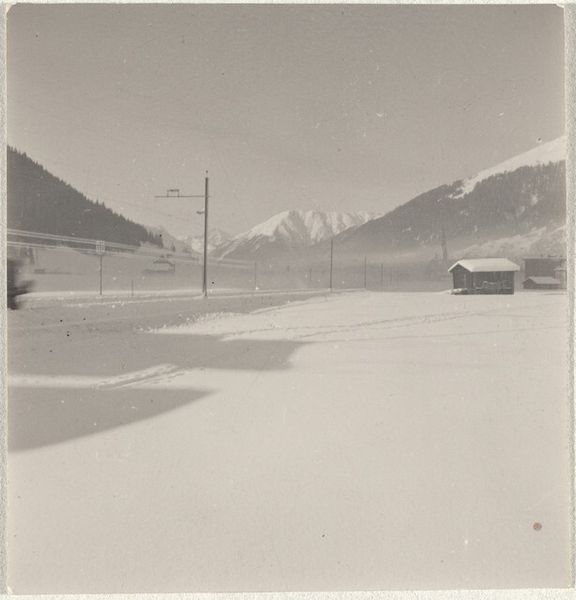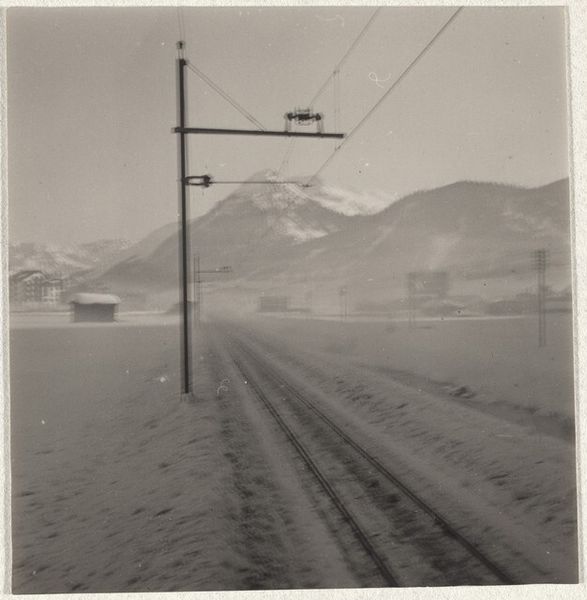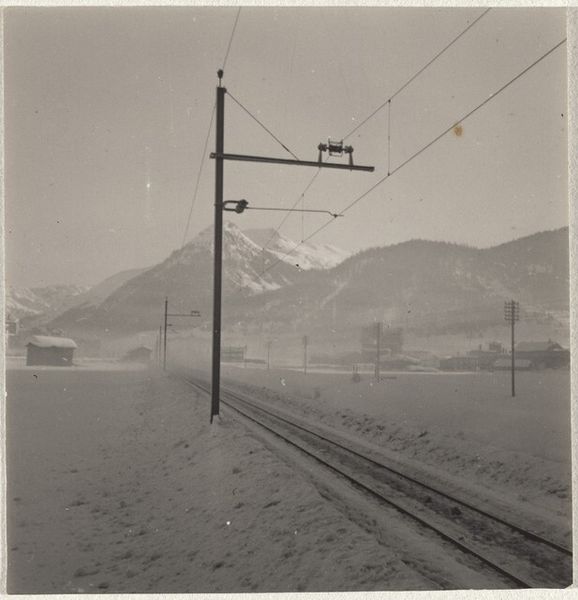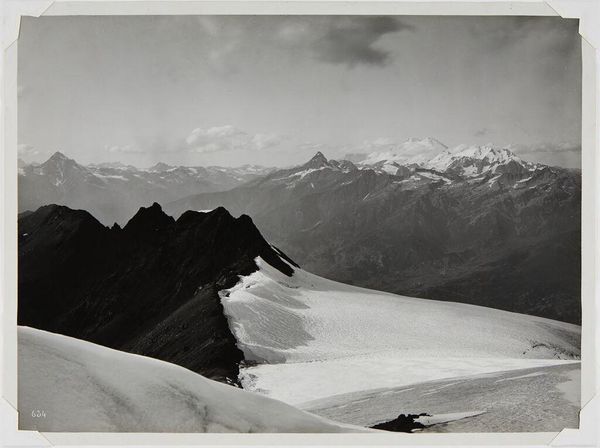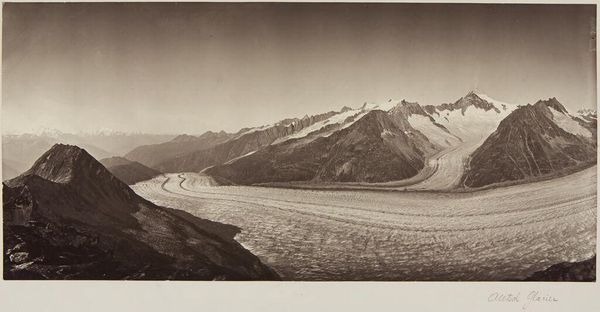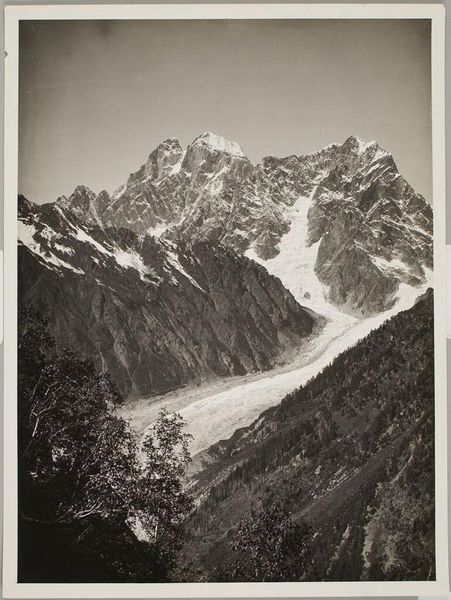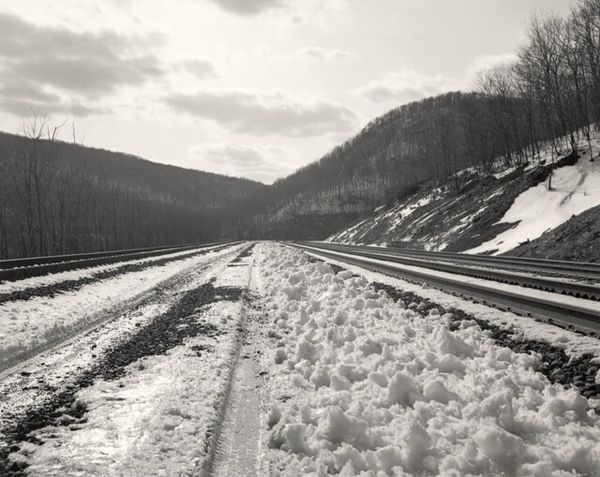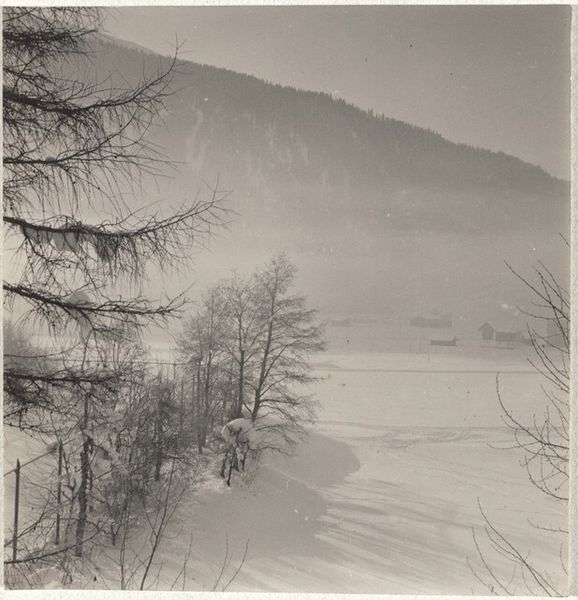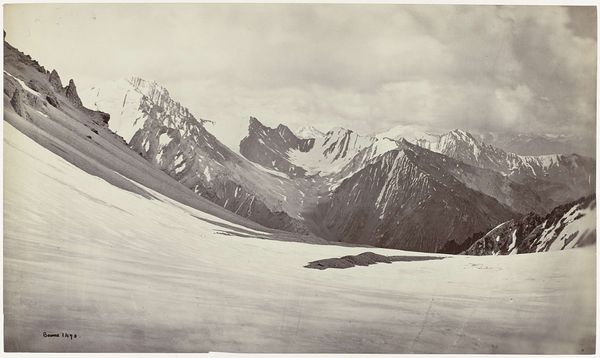
Dimensions: sheet (trimmed to image): 17.7 x 23.2 cm (6 15/16 x 9 1/8 in.)
Copyright: National Gallery of Art: CC0 1.0
Curator: Looking at this silver gelatin print titled "Railroad tracks--Landscape" by Robert Frank, dating between 1941 and 1945, I'm immediately struck by a feeling of stark isolation. The monochromatic palette emphasizes the imposing yet beautiful, somewhat melancholic scenery. What's your take on it? Editor: It feels… strangely cold, even visually. You can almost feel the bite of the winter wind blowing snow across those tracks. I'm particularly interested in how Frank used this silver gelatin printing process; it’s rough, grainy – almost tactile, emphasizing the very physical experience of a landscape in winter, not romanticizing it. Curator: The symbolism, I think, contributes to this mood. The railroad tracks themselves suggest a path, a journey – yet the snow obscures it, almost burying that possibility. There’s a tension between the human-made and the natural. The way it also draws your eye up the page toward what appears to be snowcapped mountains...almost seems to be blocking our way forward. Editor: Yes, that push and pull is essential. Railroads, for all their associations with progress and movement, are ultimately about control. Imposing infrastructure on nature. And the monochrome – we forget it’s a product of specific materials and processes. Think of the labor, the chemical interactions to produce this image… it’s not just *seeing* the landscape; it's crafting it, manipulating raw materials to reflect, and refract it back. Curator: It also taps into a deeper collective understanding. Railroads appear regularly in 19th- and 20th-century photography. Beyond transport, they were seen as tools of modernization, of territorial expansion and sometimes objects that caused suffering. This might contribute to a certain melancholy that surrounds their representation. Editor: And consider the consumption of images like these! Part of a series or collection, reprinted, viewed across time and different cultural contexts. The ‘original’ material act extends endlessly through mechanical reproduction, shifting the social meaning continuously. It forces us to grapple with how materials shape and inform ideas. Curator: So, from a study in tones and landscape, we now see echoes of ambition, melancholy and material processes intertwining to deliver meaning and engage emotion. Editor: Yes, what starts as a straightforward observation on place evolves into something much more complicated when you consider the hand – or rather the mechanical tools – behind its production.
Comments
No comments
Be the first to comment and join the conversation on the ultimate creative platform.
